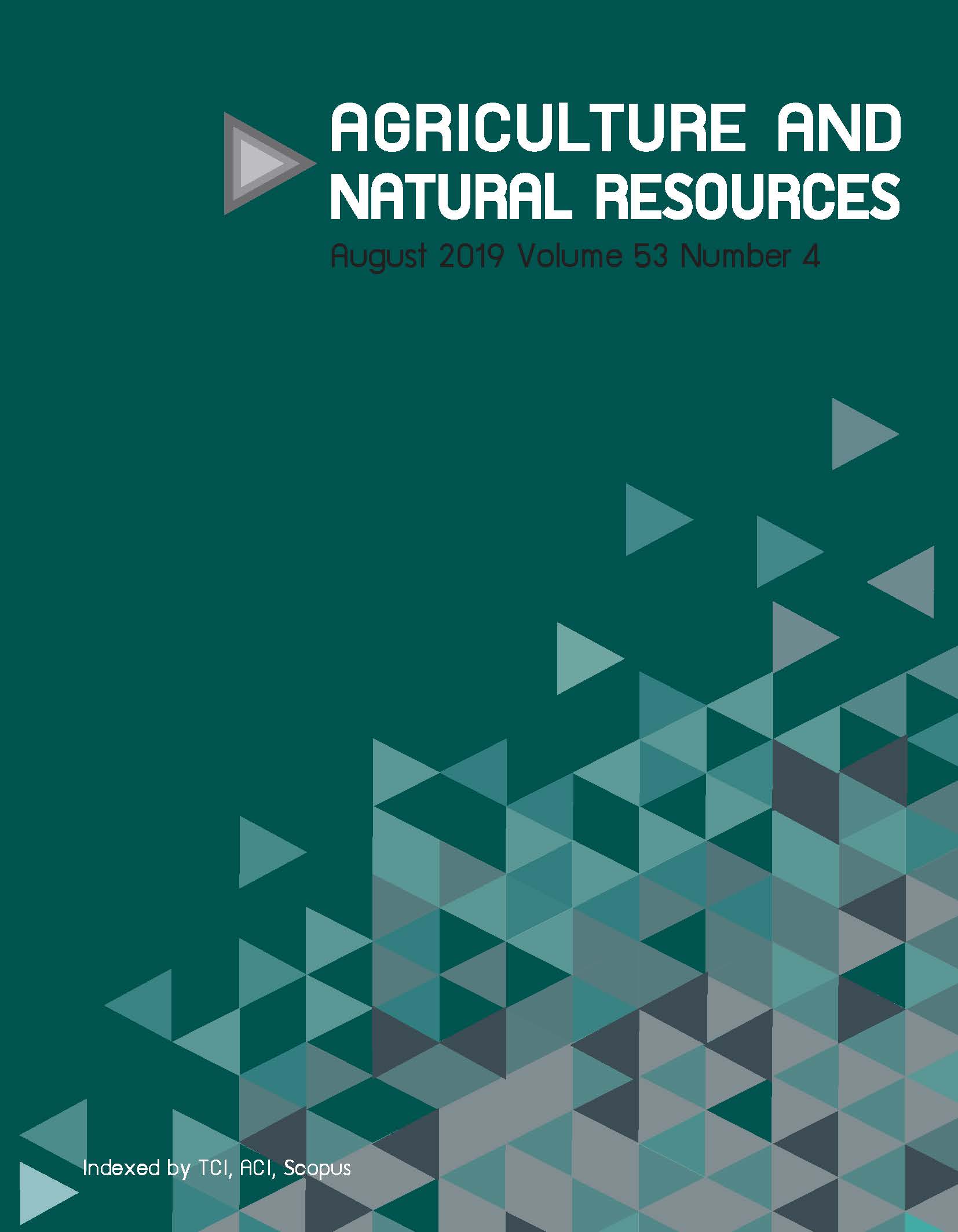Preliminary survey of the brown planthopper, Nilaparvata lugens (Stål) (Hemiptera: Delphacidae) on different varieties of rice and its natural enemies in Central Thailand
Keywords:
Biological agents, Nilaparvata lugens (Stål), Rice insect pests, Rice varietiesAbstract
The life history of Nilaparvata lugens was examined on five resistant rice varieties under laboratory conditions, whereas outbreaks of N. lugens and natural insect enemies were investigated in rice fields. In the laboratory, the samples of N. lugens treated on RD31, RD51 and PTT1 rice had short life cycles (mean ± SD) of 47.75 ± 2.06 d, 47.89 ± 3.14 d and 49.67 ± 1.80 d, respectively. In contrast, N. lugens reared on RD41 and RD47 rice had longer cycles of 54.28 ± 3.59 d and 56.78 ± 3.03 d, respectively (F = 15.621; p = 0.006). The highest prevalence of N. lugens was in PTT1, whereas the lowest populations were in RD51. However, there were no significant differences between mean rank numbers of N. lugens among the five rice varieties in both years (first year, p = 0.329; second year, p = 0.089). In addition to N. lugens, Nephotettix spp., Recilia dorsalis, Sogatella furcifera and Tagosodes pusanus were recorded as the four most abundant insect pests of rice. Significant correlations were found between the number of N. lugens and the high numbers of Nephotettix spp., C. lividipennis and T. pusanus during the second year. Of 18,999 natural enemies, C. lividipennis was the most abundant predator for N. lugens during the 2 yr period at 30.35% in the first year and 11.87% in the second year, respectively. Among 41 parasitic wasps, Oligosita yasumatsui was the dominant species collected in the first year (13.53%), followed by Tetrastichus formusanus (0.86%), Anagrus optabilis (0.62%), Tetrastichus schoenobii (0.50%) and Temelucha sp. (0.35%). The number of parasitic wasps during the second year decreased sharply in the rice plots.
Downloads
Published
How to Cite
Issue
Section
License

This work is licensed under a Creative Commons Attribution-NonCommercial-NoDerivatives 4.0 International License.
online 2452-316X print 2468-1458/Copyright © 2022. This is an open access article under the CC BY-NC-ND license (http://creativecommons.org/licenses/by-nc-nd/4.0/),
production and hosting by Kasetsart University of Research and Development Institute on behalf of Kasetsart University.







